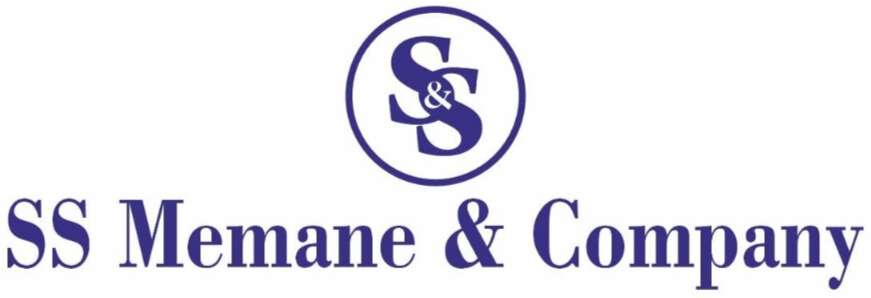Public limited company
Quick Contact
Documents Required
- Pan Card
- Aadhaar Card
- Passport
- Passport Size Photo
- Recent Utility Bill
- Name Significance Letter
- Specimen
Public limited company regeistration of India
Setting up a business in India often involves considering a public limited company for its unique benefits and opportunities. This business structure is well-suited for larger organizations aiming to raise capital from the public through the stock market.
Introduction to Public limited company
The concept of private limited company registration in India was type of business organization that is publicly traded on a stock exchange, allowing its shares to be bought and sold by the general public.
Advantages
- Access to Capital Markets: PLCs can raise funds more easily through public offerings of shares and other securities.
- Enhanced Credibility: Being publicly listed often enhances the company’s credibility and reputation.
- Liquidity for Shareholders: Shares of a PLC can be bought and sold easily, providing liquidity to investors.
- Growth Opportunities: The ability to raise substantial capital allows for greater growth and expansion opportunities.
Disdvantages
- Regulatory Burden: PLCs face a significant regulatory burden, including detailed disclosure requirements and compliance with various regulations.
- Costs: The process of going public and maintaining a listing on a stock exchange can be costly.
- Loss of Control: Founders and initial owners may lose some control over the company due to the broad ownership base.
In summary, a public limited company is a powerful business structure that allows companies to access public capital markets, providing significant opportunities for growth and expansion, but it also comes with stringent regulatory requirements and responsibilities.
Types of Public Limited Companies
There are different types of private limited companies based on their liability and structure:
1. Listed Public Limited Company:
These companies are listed on a recognized stock exchange and their shares are available for trading to the general public.
- Key Features:
- Shares are traded on stock exchanges, providing liquidity to shareholders.
- Subject to stringent regulatory requirements and disclosure norms.
- Suitable for companies looking to raise capital from a wide investor base.
2. Unlisted Public Limited Company:
These companies are public limited companies but their shares are not listed on any stock exchange.
- Key Features:
- Shares are not traded publicly but can be offered to a select group of investors.
- Less stringent regulatory requirements compared to listed companies.
- Suitable for companies that want to maintain a public structure without the complexities of being listed.
3. Government Public Limited Company:
These are public limited companies where the majority of the shares (51% or more) are held by the central or state government.
- Key Features:
- Operates under government ownership and control.
- Often established to serve public interests and provide essential services.
- Examples include public sector undertakings (PSUs) like Indian Oil Corporation (IOC) and Bharat Heavy Electricals Limited (BHEL).
4. Non-Government Public Limited Company:
These companies are public limited companies with no government ownership. They are entirely owned by private individuals or entities.
- Key Features:
- Fully privately owned and managed.
- Operates in various sectors, including manufacturing, services, technology, etc.
- Examples include companies like Reliance Industries and Tata Motors.
5. Holding Public Limited Company:
A holding public limited company owns and controls the shares of one or more subsidiary companies, but does not necessarily conduct its own business operations.
- Key Features:
- Controls subsidiary companies through significant shareholding.
- Primarily focuses on managing and overseeing the operations of its subsidiaries.
- Can be either listed or unlisted.
6. Subsidiary Public Limited Company:
A subsidiary public limited company is controlled by another company, known as the holding or parent company, which holds a significant portion of its shares.
- Key Features:
- Operates under the control of a parent or holding company.
- May or may not be listed on a stock exchange.
- Examples include subsidiaries of large conglomerates.
7. Joint Venture Public Limited Company:
These are public limited companies formed by two or more entities (either individuals or companies) to undertake a specific business venture together.
- Key Features:
- Jointly owned and managed by the partnering entities.
- Combines resources and expertise from the participating entities.
- Examples include companies formed for large infrastructure projects or strategic business initiatives.
8. Multinational Public Limited Company:
A multinational public limited company operates in multiple countries, with its headquarters in one country and branches or subsidiaries in other countries.
- Key Features:
- Operates on a global scale with international presence.
- Adheres to regulatory requirements in multiple jurisdictions.
- Examples include global corporations like Coca-Cola and Unilever.
- Key Features:
Company Registration Process with SS Memane & Company
1. Obtain Digital Signature Certificates (DSC):
- Purpose: DSC is required for signing electronic documents.
- Who Needs It: All directors and subscribers to the Memorandum of Association (MOA) and Articles of Association (AOA).
2. Obtain Director Identification Number (DIN):
- Purpose: DIN is a unique identification number for directors.
- Who Needs It: All proposed directors of the company.
- How to Get It: Apply through the SPICe+ (Simplified Proforma for Incorporating Company Electronically Plus) form on the MCA portal.
3. Name Reservation:
- Service: Reserve Unique Name (RUN) service on the MCA portal.
- Criteria: Ensure the name is unique and adheres to the naming guidelines provided by the MCA.
- Approval: Once the name is approved, it is reserved for 20 days within which the company registration must be completed.
4. Preparation of Incorporation Documents:
- Memorandum of Association (MOA): Defines the company’s objectives and scope of activities.
- Articles of Association (AOA): Outlines the rules and regulations for the company’s internal management.
- Form DIR-2: Consent to act as a director.
- Form INC-9: Declaration by the subscribers and directors.
5. Filing for Incorporation:
- Form SPICe+ (INC-32): Integrated form for company registration that includes DIN allotment, name reservation, and incorporation.
- Part A: Name reservation.
- Part B: Incorporation details.
- Linked Forms: AGILE-PRO-S (INC-35) for GSTIN, ESIC, EPFO, Professional Tax registration, and bank account opening.
- Attachments:
- MOA and AOA
- Proof of identity and address for all directors and subscribers
- Proof of registered office address
- NOC from the owner of the premises (if applicable)
6. Payment of Fees:
- ROC Fees: Pay the prescribed registration fees to the Registrar of Companies (ROC).
- Stamp Duty: Pay the stamp duty based on the state in which the company is being registered.
7. Certificate of Incorporation:
- Issuance: Upon verification of the documents and payment of fees, the ROC issues the Certificate of Incorporation (COI).
- Contents: The COI includes the company’s Corporate Identification Number (CIN), date of incorporation, and PAN and TAN of the company.
8. Post-Incorporation Compliance:
- Bank Account: Open a bank account in the name of the company.
- Statutory Registers: Maintain statutory registers as required under the Companies Act, 2013.
- Share Certificates: Issue share certificates to the subscribers within two months of incorporation.
- Commencement of Business: File a declaration for the commencement of business (Form INC-20A) within 180 days of incorporation.
Requirements
1.Minimum Requirements:
- Minimum Number of Directors: At least three directors are required.
- Minimum Number of Shareholders: At least seven shareholders are required.
- Minimum Capital Requirement: No specific minimum capital requirement, but the company must have an authorized capital to issue shares.
- DIN (Director Identification Number): Every director must have a DIN.
- DSC (Digital Signature Certificate): All directors must have a DSC for signing electronic documents.
2. Name Approval:
- Unique Name: The company name must be unique and not similar to any existing company or trademark.
- Name Reservation: Apply for name reservation through the RUN (Reserve Unique Name) service on the MCA (Ministry of Corporate Affairs) portal.
3. Documentation:
Memorandum of Association (MOA): Defines the company’s objectives and scope of activities.
- Articles of Association (AOA): Outlines the rules and regulations for the company’s internal management.
- Form DIR-2: Consent to act as a director.
- Form INC-9: Declaration by the subscribers and directors.
- Identity Proof and Address Proof: For all
- Copyright 2024 © SS Memane || Designed By || Mr. Sunil Memane


